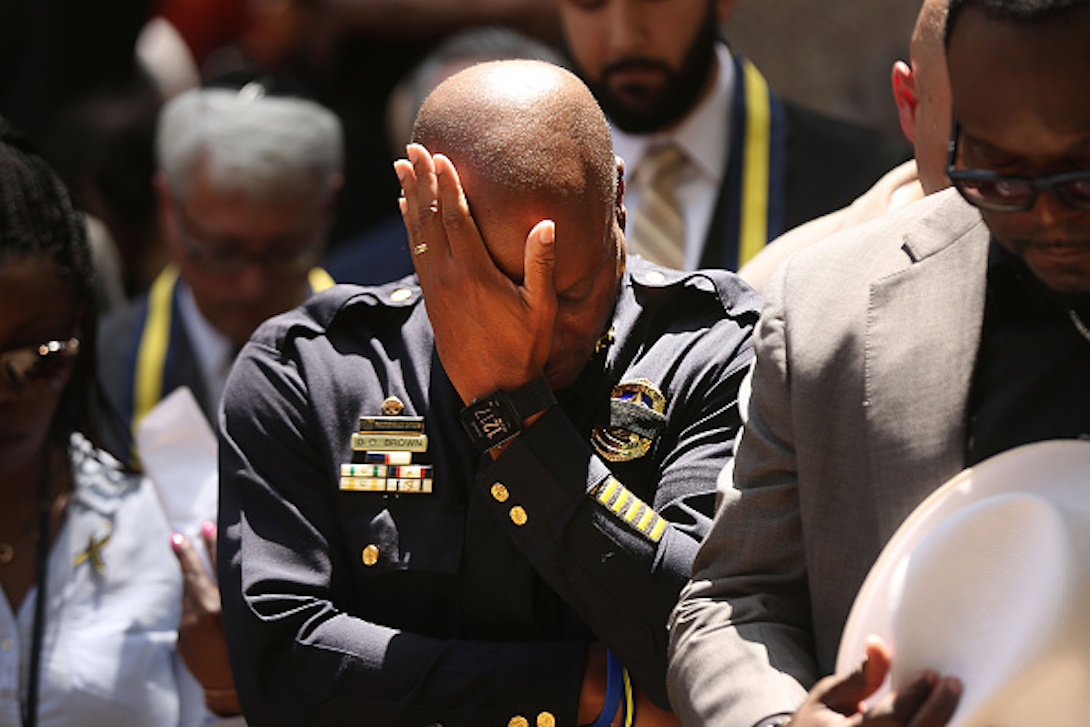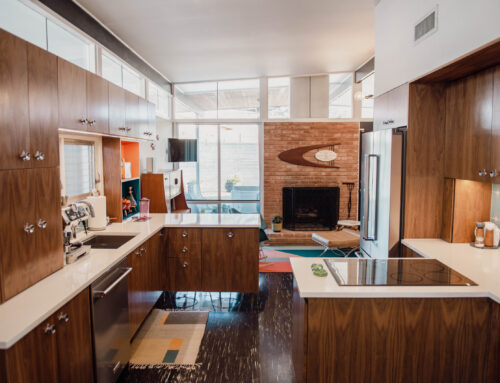
Dallas Police Chief David Brown pauses at a prayer vigil following the deaths of five police officers last night during a Black Live Matter march on July 8, 2016 in Dallas, Texas. (Photo by Spencer Platt/Getty Images)
Our city cannot be torn apart by the actions of one
The playground was nearly empty and the sun had almost set when my 4-year-old daughter ran over to me and began digging around in my purse, searching for something I was about to lose.
She gleefully pulled out a tiny can of hairspray. “Momma, pretend like you lost something and I’ll find it for you,” she instructed, running off with my lost object.
“And who are you?” I called after her.
She looked back and grinned, “I’m a police officer.”
For the next 20 minutes, until we completely lost the light, Dallas’ tiniest cop assisted an exceedingly forgetful and disorganized woman in tracking down her hairspray, her wallet, two quarters and some gum.
That was Friday evening, the day after 14 police officers were shot — five of them killed — in downtown Dallas. My daughter knew nothing of the tragedy, yet here she was, beautifully imagining the role of a police officer as someone who aids and protects.
And so it was in Dallas when shots rang out at an otherwise peaceful protest.
This month, I had planned to share with you my thoughts about the proposed privatization of Fair Park, or maybe outline the new transportation ideas presented in TxDOT’s CityMAP. I even thought about discussing the upcoming city budget process or reflecting on the hunt for a new city manager. But all of that seems very trivial right now.
As I write this, it’s four days after a protest rally turned tragic as a lone gunman took the lives of Senior Cpl. Lorne Ahrens, Sgt. Michael Smith, officers Michael Krol and Patrick Zamarripa of the Dallas Police Department, and officer Brent Thompson of the Dallas Area Rapid Transit Police Department. Part of what is so shocking and heartbreaking is that despite our city’s history of segregation and racism — or perhaps because of it — Dallas has been an exception to the recent spate of race-related police shootings.
This is not a coincidence, but a reflection of thoughtful and purposeful changes in our police department’s policies and training over the last two decades to reduce officer-involved shootings and to engage with neighborhoods, especially minority communities.
Here’s what those policies have wrought: The weekend following the shooting, some Black Lives Matters protesters gathered near NorthPark Center while counter-protesters in cowboy hats and Confederate flags gathered across the street. But instead of more violence and anger, the leaders of the groups came together, hugged each other, and prayed together.
And this: When the sniper began firing on police, a woman who had attended the Black Lives Matter event was shot in the leg. She laid on top of her 15-year-old son as chaos erupted around them. Dallas police officers rushed over to the mother and son, covering them with their own bodies to shield them from the barrage of bullets. Recovering at the hospital, the woman recounted how her son had always wanted to be a police officer.
And perhaps most importantly: Moments before the gunman opened fire, Black Lives Matter protesters were chatting with Dallas cops, taking pictures and shaking hands. No tear gas and riot gear. Just our wonderful Dallas Police officers doing exactly what my 4-year-old imagines they do: protecting Dallas citizens and ensuring our right not only to speak freely, but to assemble peaceably.
So no, our city will not be torn apart by this unconscionable crime. Dallas has been a national leader in confronting an ugly legacy of racism and reshaping our police department in response to past injustices. Elsewhere in our country, a binary debate rages on, pitting those who support Black Lives Matter against those who support the police. But Dallas has proven that there are no sides, that supporting a policing policy that protects and serves all Dallas citizens while honoring our men and women in blue can be one and the same.
That is the legacy of the five officers who died protecting our city.





